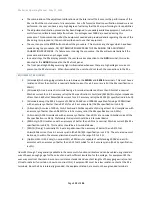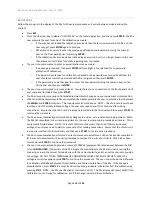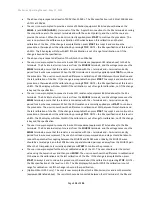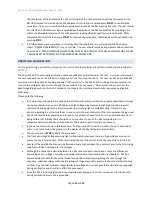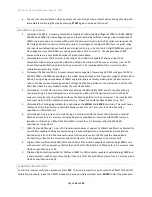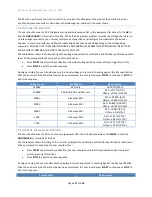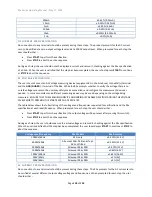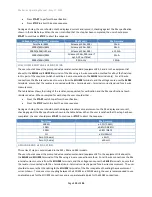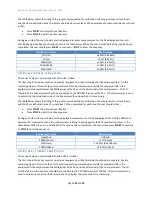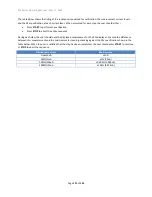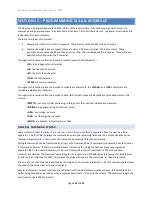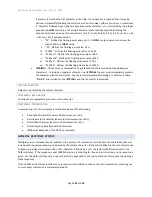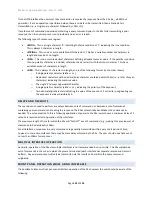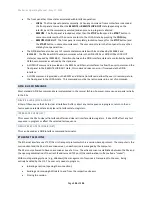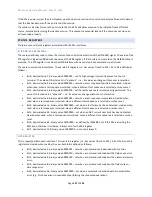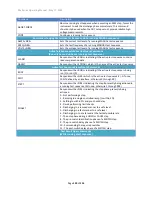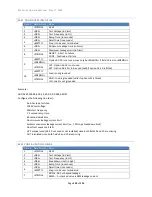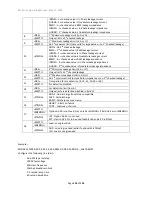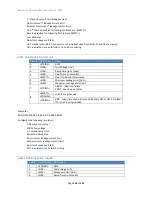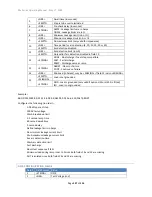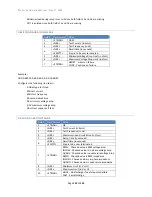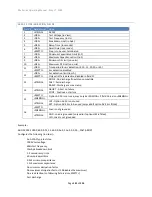
95x Series Operating Manual - May 17, 2022
Page
126
of
155
•
The front panel has three states associated with interface operation-
o
LOCAL
. The front panel operates normally. When any command from an interface is decoded,
the front panel enters either the
REMOTE
or
REMOTE LOCK-OUT
state (depending on the
interface and the commands executed) and any menu in progress is aborted.
o
REMOTE
. The front panel is locked out other than the
STOP
button (and the
START
button in
some circumstances) but the user can return to the LOCAL state by pressing the
CNFG
key.
o
REMOTE LOCK-OUT
. The front panel is completely locked-out except for the
STOP
button (and
the
START
button in some circumstances). The user cannot return the front panel to any other
state by front panel action.
•
The GPIB interface also has a set of remote states associated with it as defined by IEEE488.1 and
IEEE488.2. The 95x does NOT decode commands while in the GPIB LOCAL or GPIB LOCAL LOCK-OUT
states (as required by IEEE488.2). Transitions between the GPIB interface states are controlled by specific
GPIB bus commands as defined by the standards.
•
A LOCKOUT command is provided on the RS232 and Ethernet interfaces to allow the user to command the
front panel to the REMOTE LOCK-OUT state; this command raises an error if received via the GPIB
interface.
•
A LOCAL command is provided on the RS232 and Ethernet interfaces to allow the user to remotely return
the front panel to the LOCAL state. This command must be the last command in a set of commands.
GPIB BUS COMMANDS
Most standard GPIB bus commands are implemented in the normal fashion; however, some cause a special activity
in the 95x-
DEVICE CLEAR (SDC AND DCL)
Either of these cause the 95x to clear all interface buffers, abort any test sequence in progress, return to the no
test sequence selected state and clear all interface status registers.
INTERFACE CLEAR (IFC)
This causes the 95x to clear all interface buffers and clear all interface status registers. It does NOT affect any test
sequence in progress or affect the selected test sequence.
GROUP EXECUTE TRIGGER (GET)
This can be used as a GPIB interface command terminator.
ETHERNET SESSIONS
The Ethernet interface uses TCP/IP as its transport protocol which is a session-based protocol. The computer is the
session client and the 95x is the session server, so each session is managed by the computer.
The 95x is only allowed to have one session active at a time. The active session is established between the 95x and
the opening combination of the client IP address and TCP port (this combination is often called a “socket”).
With most operating systems (e.g., Windows) the management of sessions is transparent to the user, being
entirely handled by the OS. The user only needs to program
–
•
Initiating a session (opening the connection).
•
Sending and receiving ASCII data to and from the respective streams.
•
Closing the session.

